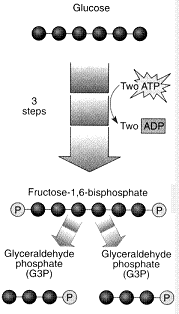You are studying a gene that has four exons and can undergo alternative splicing. Exon 1 has two alternatives, exon 2 has five alternatives, exon 3 has three alternatives, and exon 4 has four alternatives
If all possible splicing combinations were used, how many different splice isoforms could be produced for this gene?
(a) 22
(b) 30
(c) 60
(d) 120
(d) 2 × 5 × 3 × 4 = 120.
You might also like to view...
If an organism were a glucose and lactose fermenter, the LIA reaction would be:
a. K/A. b. A/K. c. A/A. d. K/K.
A typical asteroid has an orbital period around the Sun of 5.2 years. How far from the Sun is this asteroid?
a. 5.2 AU b. 10.4 AU c. 27.0 AU d. 3.0 AU e. 2.3 AU
The chemical reaction illustrated in the figure is:
a. the first step in the citric acid cycle.
b. the energy investing phase of glycolysis.
c. fermentation.
d. part of the electron transport chain.
e. the energy capture phase of glycolysis.
Two closely related populations of mice have been separated for a long period by a river. Climatic change causes the river to dry up, thereby bringing the mice populations back into contact in a zone of overlap. Which of the following is not a possible outcome when they meet?
A) They interbreed freely and produce fertile hybrid offspring. B) They no longer attempt to interbreed. C) They interbreed in the region of overlap, producing an inferior hybrid. Subsequent interbreeding between inferior hybrids produces progressively superior hybrids over several generations. D) They remain separate in the extremes of their ranges but develop a hybrid zone in the area of overlap. E) They interbreed in the region of overlap, but produce sterile offspring.